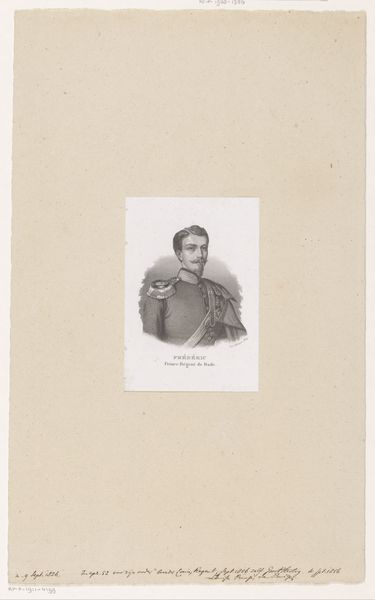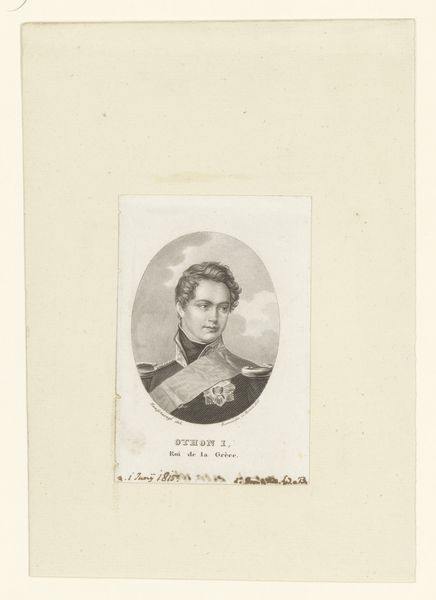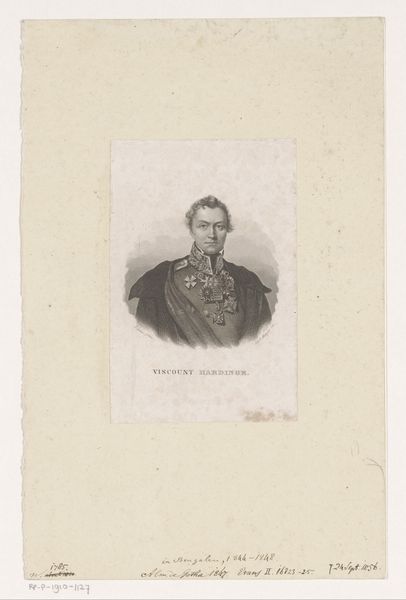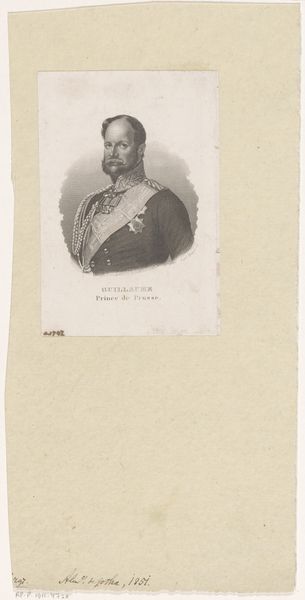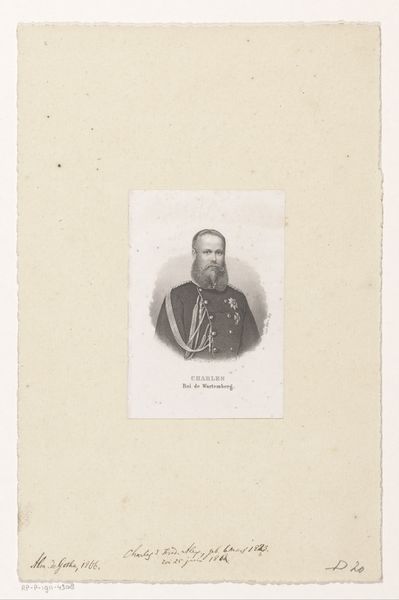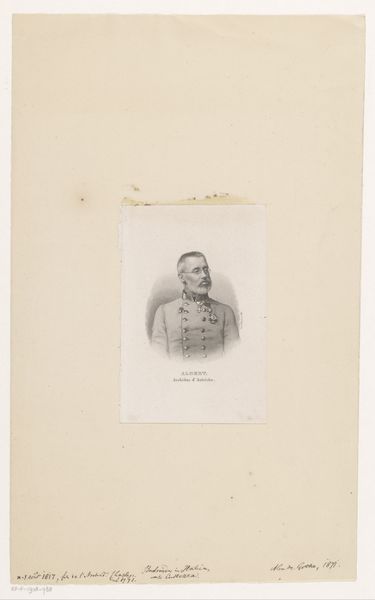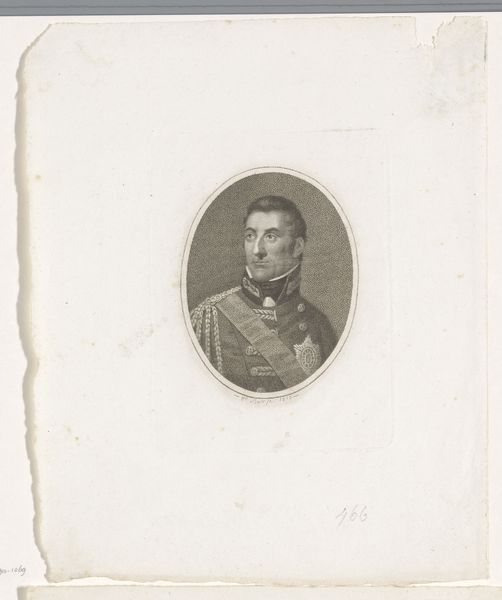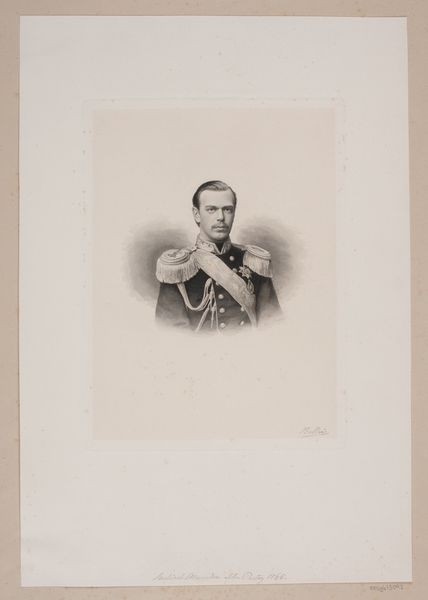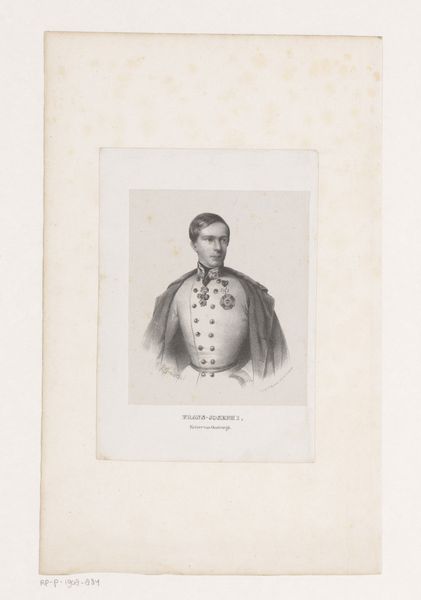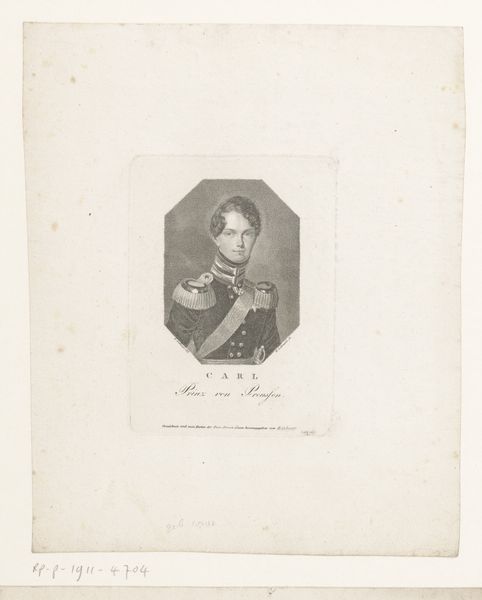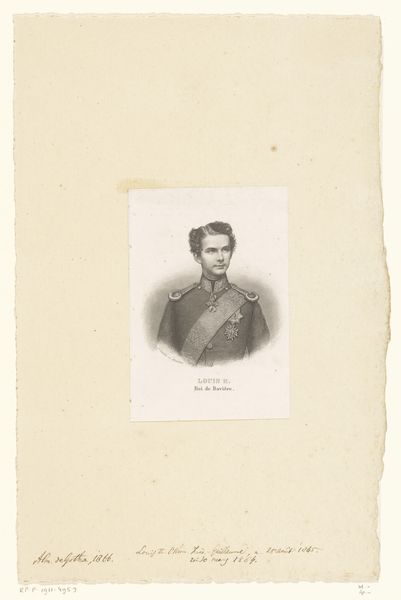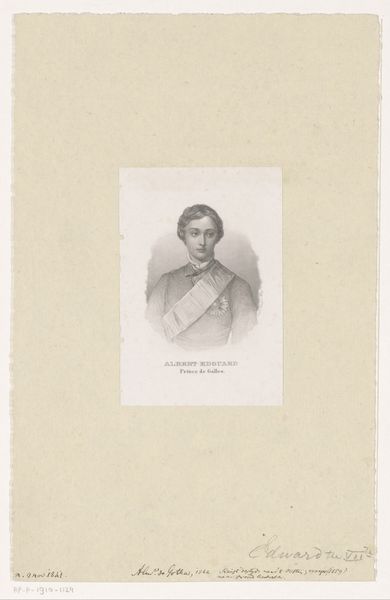
print, paper, engraving
#
portrait
#
neoclacissism
# print
#
paper
#
engraving
Dimensions: height 108 mm, width 74 mm
Copyright: Rijks Museum: Open Domain
Curator: Welcome. We’re standing before Johann Daniel Laurenz’s "Portret van Reinier, aartshertog van Oostenrijk," dating from sometime between 1818 and 1832. It’s an engraving on paper. What’s your immediate take on it? Editor: Well, immediately I notice the tight formality. It exudes a sense of contained power and self-importance, characteristic of its subject. Curator: Absolutely. The artist employs the techniques of neoclassicism. Note the controlled lines and how the use of light and shadow give the figure a sculptural quality. This, coupled with the clean oval format, aligns with the neoclassical revival of classical aesthetics, conveying order and reason. Editor: And considering Reinier's position as Archduke, appointed Viceroy of Lombardy-Venetia in 1818, this portrait served to project imperial authority. We need to think about the sociopolitical dynamics. How did prints like these function as tools of representation during Austrian rule in a region marked by its own distinct identities? Curator: Interesting. I am more fascinated by the medium of engraving itself. The precision required to carve the image onto a metal plate speaks to the period's fascination with detailed rendering and technical skill, contributing to the overall aura of precision and control, mirroring the subject’s persona. Editor: True, but that "precision" isn't neutral. Laurenz strategically constructed a visual language that aimed to solidify Austrian dominion. We shouldn't divorce artistic technique from the power structures it was meant to serve. Curator: Indeed, it is a potent illustration of the entanglement of power and representation. Through close study, one begins to see the mechanics by which the subject is given status and permanence, a constructed persona, almost. Editor: Precisely. Analyzing its visual vocabulary and sociopolitical function lets us dissect not just the image but also the very idea of imperial power in a contested landscape. It encourages a questioning stance towards those supposedly neutral representations. Curator: A rich perspective indeed, enriching how we appreciate Laurenz’s craft and Austrian power relations. Editor: Yes, hopefully it has deepened our understanding of the art’s complex role during a pivotal period in European history.
Comments
No comments
Be the first to comment and join the conversation on the ultimate creative platform.


